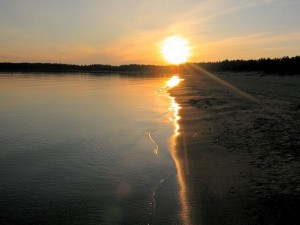
1. Overview
2. Corpophilia and Necrobiosis
3. Necropsy
4. Rippikoulu
Written by Devamitra
Overview
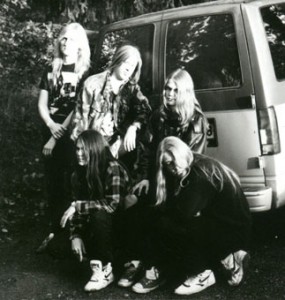 Midsummer’s sylvan possession will claim many lives tonight by drowning, stabbing, hanging and other morbid rituals that cloud the light of the greatest Finnish celebration. It can be said that the spiritual conflict between the barrenness of the Finnish urban life and the sudden plunge into the freshness of nature undertaken by most at this time of the year, combined with the gargantuan intake of alcohol, causes a temporary collapse of the veil of the civilization, when festivals end as festivals must. Under the deceptive tolerance of the society, dark depths boil and murderous impulses become sublimated thoughts. Some of these undercurrents were illuminated and analyzed almost as topics of transcendental philosophy in the dark contemplative statements of Finnish Death Metal, one of the strongest musical movements that ever arose from Finnish soil and also unarguably one of the strongest Death Metal scenes of the period. It is a testament to creativity that it’s still very hard to pin down a certain easily recognizable ‘Finnish sound’, but this does not mean a lack of mental images connecting them.
Midsummer’s sylvan possession will claim many lives tonight by drowning, stabbing, hanging and other morbid rituals that cloud the light of the greatest Finnish celebration. It can be said that the spiritual conflict between the barrenness of the Finnish urban life and the sudden plunge into the freshness of nature undertaken by most at this time of the year, combined with the gargantuan intake of alcohol, causes a temporary collapse of the veil of the civilization, when festivals end as festivals must. Under the deceptive tolerance of the society, dark depths boil and murderous impulses become sublimated thoughts. Some of these undercurrents were illuminated and analyzed almost as topics of transcendental philosophy in the dark contemplative statements of Finnish Death Metal, one of the strongest musical movements that ever arose from Finnish soil and also unarguably one of the strongest Death Metal scenes of the period. It is a testament to creativity that it’s still very hard to pin down a certain easily recognizable ‘Finnish sound’, but this does not mean a lack of mental images connecting them.
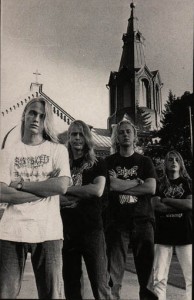
Among the first were the playful Death Metal / Grindcore crossover Xysma, the brutal Disgrace and the dreamier but less eloquent Funebre from the historic capital of Turku. In nearby Loimaa the discipline of Demigod and Adramelech formulated occult and mythological visions from these roots. The true monument of the early scene was created by Abhorrence from the modern capital of Helsinki, in their devastating demos that displayed the ferocity of old school black metal alongside articulate influences from British and Swedish Death Metal movements. Later the heritage of Abhorrence spawned into the more ‘professional’ folk influenced narratives of Amorphis des
pite the fact that the earlier band was far from amateurish itself. Besides Xysma, also bands from the wooded Birkaland county were heavily influenced by punk and thrash especially in anti-authoritarian spirit: Rippikoulu, Convulse, Purtenance and Lubricant. A counterpart were the quasi-Byronian melancholic poets of Ostrobothnia, heirs of the strict religious sects of the Bothnian coast: Sentenced, Cartilage and Wings. The same mystical traits combined with grindcore, Sarcofago and lots of booze in Beherit, Belial (“Wisdom of Darkness”) and Impaled Nazarene, who composed the classics of Finnish Black Metal contemporaneously (not successively as in the world at large) to the Death Metal movement. The promising Necropsy from Lahti released a strong split album ‘Unholy Domain’ with Demigod but never managed to release a full-length album back in the day, while the cryptic and absolutely unique one album wonder Demilich from thrash capital Kuopio set the bar for Finnish ‘progressive’ Death Metal extremely high on ‘Nespithe’; only Unholy from Imatra or Paraxism from Jyväskylä (who did not release an album) could compete in sublime weirdness. Mordicus from North Karelia also left a legacy of one quality album, ‘Dances from Left’, while fellow Joensuu mystics Phlegethon only released demos and one EP before some of the same individuals surfaced in the Doomdeath tribute band Hooded Menace. The quest to bring back moments of old school Death Metal majesty brought about by later bands such as Devilry, Slugathor, Deathspawned Destroyer, Ascended and Lie in Ruins is discussed in more detail in our article “Ascension of Sepulchral Echoes: A Finnish Death Metal Revival”.
We are proud to present a sequence of tracks collected by Fenno-American Death Metal connoisseur Benjamin Tianen in tribute to Finland and its strain of artists and conjurers. This compilation of obscure quality Finnish Death Metal is recommended for listening in the twilit hours of day, preferably in rather uninhabited locations as most of Finland is. If there is one teaching one must bring home from Finnish artists and Finnish school of mental exploration, it is that one must not love happiness as much as one loves truth.
Corpophilia and Necrobiosis
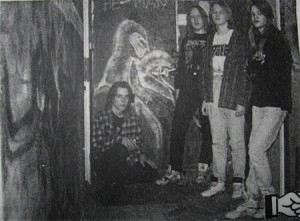 Visitors remembers the Western shores of Finland mostly from their warm summer days, windstorms and chilly nights of Autumn. The dunes of the shore of Yyteriare unique in the whole Scandinavian region while most of the towns carry relics of past industries but have failed to establish themselves in modern or digital age, remaining secluded communities with little vital attractions to the youngsters. Thus it is not surprising that towns such as the historic Uusikaupunki, a weird silent nature-surrounded industrial port that has always baffled my spirit, gave birth to multiple demo level death metal insanities in the early 90′s.
Visitors remembers the Western shores of Finland mostly from their warm summer days, windstorms and chilly nights of Autumn. The dunes of the shore of Yyteriare unique in the whole Scandinavian region while most of the towns carry relics of past industries but have failed to establish themselves in modern or digital age, remaining secluded communities with little vital attractions to the youngsters. Thus it is not surprising that towns such as the historic Uusikaupunki, a weird silent nature-surrounded industrial port that has always baffled my spirit, gave birth to multiple demo level death metal insanities in the early 90′s.
Coprophilia described the twisted and tangled nature of woods, human remains and animal entrails on the four songs of their one and only demo, playing distinctive and intricate heavy metal influenced straightforward melodies to lend catchiness to songs that in their spontaneous clarity bring into focus the main influences for old Finnish death metal: heavy metal, Bay Area speed metal, horror music and UK bands in the vein of Napalm Death.
http://www.youtube.com/watch?v=OAqI9V0cUtY&feature=player_embedded
More sarcastic, irritant and grinding, Necrobiosis pummeled a simplistic punk-o-rama riffspace almost like Blasphemy or Archgoat would have done it except using the concluding expectancy common to dual vocal grindcore so that the grunts and screams echo exactly the phrases played by the rhythm guitar. Lead guitars often recall metal guitarists’ introductory practice pieces in the vein of Iron Maiden and Rainbow, as was the case with not only Coprophilia, but also Amorphis, Sentenced and many other greats. Curiously for a word I had never heard before, Necrobiosis was also picked as the band name around the same time by guys a couple of hundred kilometers away in Riihimäki. You might know this band better by a name they thought of later: Skepticism.
http://www.youtube.com/watch?v=-v_wYJOfJFM&feature=player_embedded
Necropsy
In an era when Finnish death metal was a freaky force of nature, punishing everything in its path, Necropsy from Lahti, Finland, was doomed to obscurity as many of their peers, the likes of Mordicus, Convulse, Funebre and Abhorrence. In five years (1989-1993) they created 7 demo tapes and appeared on one 7″EP and a split LP with Demigod on the infamous Seraphic Decay label. Thrashing and grinding, organic and brutalous death metal of this kind would freshen up the scene of today immensely and thus we welcome the rumours that Necropsy is staging a comeback in true old school spirit to show the weakened versions of Carcasses and Pestilences who still holds the true spirit of unholy death.
http://www.youtube.com/watch?v=RfxdKxkg-Ao&feature=player_embedded
Rippikoulu
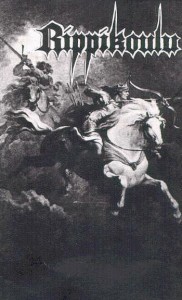 What force in the inner core of man gives birth to death metal impulse? Is it fear, hatred, obstinence, passion, paranoia, vision or celebration of power? “Rippikoulu” is Finnish for “confirmation school”, which is an institution partaken by Finnish teenagers in order to be educated in the rituals and tenets of the Lutheran church. Celebrated usually in a camp away from the city and the participants’ homes, it ironically has a habit of devolving into a minor orgy of sin while the sole motivation of attendance for most is the hope of the meager sums of money elderly relatives usually bestow upon one, after the confirmation. When small town death metal cults produced their blasphemic demo output, it’s not far-fetched to say that it was this kind of absurd experiences with organized religion that led them to deny and spontaneously analyze the hypocritical, indoctrinating social customs that lead a child or a man to accept Christ for the sake of community and convenience, while at the same time materialistically mocking the values of the spiritual tradition.
What force in the inner core of man gives birth to death metal impulse? Is it fear, hatred, obstinence, passion, paranoia, vision or celebration of power? “Rippikoulu” is Finnish for “confirmation school”, which is an institution partaken by Finnish teenagers in order to be educated in the rituals and tenets of the Lutheran church. Celebrated usually in a camp away from the city and the participants’ homes, it ironically has a habit of devolving into a minor orgy of sin while the sole motivation of attendance for most is the hope of the meager sums of money elderly relatives usually bestow upon one, after the confirmation. When small town death metal cults produced their blasphemic demo output, it’s not far-fetched to say that it was this kind of absurd experiences with organized religion that led them to deny and spontaneously analyze the hypocritical, indoctrinating social customs that lead a child or a man to accept Christ for the sake of community and convenience, while at the same time materialistically mocking the values of the spiritual tradition.
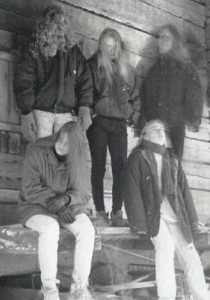 Valkeakoski was another boring town even by Finnish standards which used to smell like feces because of the paper industry, an example of climate perfect for original death metal. At surface, the most notable characteristic of Rippikoulu was their use of Finnish language for invocation, which has often been abused but at the right hands and in the right mouth withholds the tremendous syllabic power feared by Nordic warriors since the Bronze Age, as recounted in Kalevalan mythos. The stupendous music of Rippikoulu’s two demos, “Mutaation Aiheuttama Sisäinen Mätäneminen” (“internal rotting by mutation”) and “Musta Seremonia” (“black ceremony”), bridge the grindcore influenced ecstatic physicality of Xysma with earthen, suffocated sludge in contorted, space-and-time stretching rhythmic dynamicism reminiscent of Winter‘s and diSEMBOWELMENT‘s most psychedelic lapses. It gives the impression of a blind, tormented prophet shouting fragmented glimpses of pure vision to the darkened, apocalyptic world with barely any ears left to listen to human voice amidst the collapse of industrial infrastructure. In the slow, emotional leads one could hear Paradise Lost, but in its warlike sparseness and logic, even nihilism, it’s something closer to the most doomed moments of Bolt Thrower’s “War Master” while the almost ridiculously disembodied parody of gloomy gothic organ in “Musta Seremonia” brings to mind Unholy‘s drugged haze; Faustian sorrow and blasphemous sense of humor united in one single strangely reverent and innocent package which is without question another forgotten jewel of the olden Finnish death metal scene.
Valkeakoski was another boring town even by Finnish standards which used to smell like feces because of the paper industry, an example of climate perfect for original death metal. At surface, the most notable characteristic of Rippikoulu was their use of Finnish language for invocation, which has often been abused but at the right hands and in the right mouth withholds the tremendous syllabic power feared by Nordic warriors since the Bronze Age, as recounted in Kalevalan mythos. The stupendous music of Rippikoulu’s two demos, “Mutaation Aiheuttama Sisäinen Mätäneminen” (“internal rotting by mutation”) and “Musta Seremonia” (“black ceremony”), bridge the grindcore influenced ecstatic physicality of Xysma with earthen, suffocated sludge in contorted, space-and-time stretching rhythmic dynamicism reminiscent of Winter‘s and diSEMBOWELMENT‘s most psychedelic lapses. It gives the impression of a blind, tormented prophet shouting fragmented glimpses of pure vision to the darkened, apocalyptic world with barely any ears left to listen to human voice amidst the collapse of industrial infrastructure. In the slow, emotional leads one could hear Paradise Lost, but in its warlike sparseness and logic, even nihilism, it’s something closer to the most doomed moments of Bolt Thrower’s “War Master” while the almost ridiculously disembodied parody of gloomy gothic organ in “Musta Seremonia” brings to mind Unholy‘s drugged haze; Faustian sorrow and blasphemous sense of humor united in one single strangely reverent and innocent package which is without question another forgotten jewel of the olden Finnish death metal scene.
http://www.youtube.com/watch?v=Ik4oNGK9cBE&feature=player_embedded
1 CommentTags: corpophilia, death metal, Finland, Finnish Death Metal, necrobiosis, Necropsy, rippikoulu, zine-articles
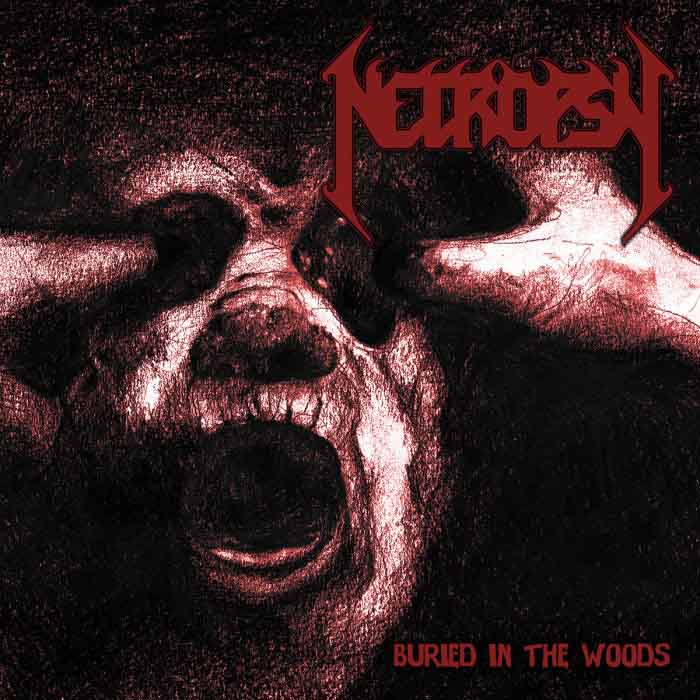
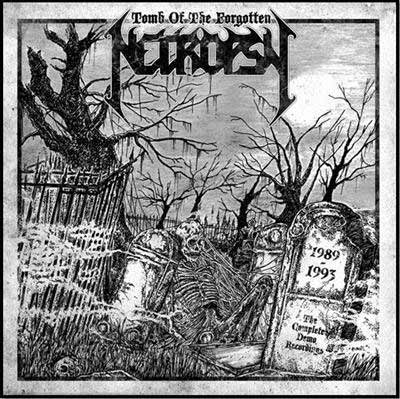

 Midsummer’s sylvan possession will claim many lives tonight by drowning, stabbing, hanging and other morbid rituals that cloud the light of the greatest Finnish celebration. It can be said that the spiritual conflict between the barrenness of the Finnish urban life and the sudden plunge into the freshness of nature undertaken by most at this time of the year, combined with the gargantuan intake of alcohol, causes a temporary collapse of the veil of the civilization, when festivals end as festivals must. Under the deceptive tolerance of the society, dark depths boil and murderous impulses become sublimated thoughts. Some of these undercurrents were illuminated and analyzed almost as topics of transcendental philosophy in the dark contemplative statements of Finnish Death Metal, one of the strongest musical movements that ever arose from Finnish soil and also unarguably one of the strongest Death Metal scenes of the period. It is a testament to creativity that it’s still very hard to pin down a certain easily recognizable ‘Finnish sound’, but this does not mean a lack of mental images connecting them.
Midsummer’s sylvan possession will claim many lives tonight by drowning, stabbing, hanging and other morbid rituals that cloud the light of the greatest Finnish celebration. It can be said that the spiritual conflict between the barrenness of the Finnish urban life and the sudden plunge into the freshness of nature undertaken by most at this time of the year, combined with the gargantuan intake of alcohol, causes a temporary collapse of the veil of the civilization, when festivals end as festivals must. Under the deceptive tolerance of the society, dark depths boil and murderous impulses become sublimated thoughts. Some of these undercurrents were illuminated and analyzed almost as topics of transcendental philosophy in the dark contemplative statements of Finnish Death Metal, one of the strongest musical movements that ever arose from Finnish soil and also unarguably one of the strongest Death Metal scenes of the period. It is a testament to creativity that it’s still very hard to pin down a certain easily recognizable ‘Finnish sound’, but this does not mean a lack of mental images connecting them.
 Visitors remembers the Western shores of Finland mostly from their warm summer days, windstorms and chilly nights of Autumn. The dunes of the shore of Yyteriare unique in the whole Scandinavian region while most of the towns carry relics of past industries but have failed to establish themselves in modern or digital age, remaining secluded communities with little vital attractions to the youngsters. Thus it is not surprising that towns such as the historic
Visitors remembers the Western shores of Finland mostly from their warm summer days, windstorms and chilly nights of Autumn. The dunes of the shore of Yyteriare unique in the whole Scandinavian region while most of the towns carry relics of past industries but have failed to establish themselves in modern or digital age, remaining secluded communities with little vital attractions to the youngsters. Thus it is not surprising that towns such as the historic  What force in the inner core of man gives birth to
What force in the inner core of man gives birth to  Valkeakoski
Valkeakoski
